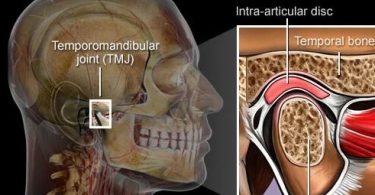
Abstract: Tinea is also known as superficial mycotic infections which are common throughout the world. Tinea corporis is a fungal infection of the body caused by Dermatophytes. This article deals with an overview of Tinea, focusing upon its various aspects along with scope of homoeopathy in cases of tinea.
Introduction– Tinea is also known as ‘ringworm’ is a superficial mycotic infection. Tinea corporis is a fungal infection of the body caused by Dermatophytes. Tinea corporis characterised by circinate eruptions,itching, burning, soreness and secondary infections2.
The prevalence of superficial mycotic infections ranges from 20 to 25% worldwide. It can occur in either sex or in any age and is bound to have effect on quality of life of patients2.
Etiology- The dermatophytes causing tinea corporis belong to genera Trichophyton, Epidermophyton, and Microsporum. T. rubrum is most common cause of dermatophytosis and is the most common cause of tinea corporis.
There is no sex predominance. Humans may become infected through close contact with an infected individual, an infected animal (domestic dog or cat), contaminated fomites, or contaminated soil 3, 4.
Clinical feature-
- Ring –shaped rash.
- Itching.
- Red, scaly or cracked skin.
- Hair loss3,4
Clinical Type according to site of lesion3, 4
| Clinical Types | Site of Infection |
| Tinea capitis | Head (scalp), eyebrows, Eyelashes |
| Tinea corporis | Body (glaborous skin) |
| Tinea cruris | Groin region |
| Tinea unguium | Nails |
| Tinea barbae | Beard area of face |
| Tinea manuum | Hand |
| Tinea pedis | Feet (athlete’s foot) |
| Tinea Imbricata | Back, arms & abdomen |
| Tinea faciei | Region of face without beard |
Differential Diagnosis4
- Pityriasis rosea
- Tinea versicolor
- Nummular eczema
- Plaque psoriasis
- Atopic dermatitis
Diagnosis4– A detailed medical history, physical examination, examination of skin scrapings on potassium hydroxide (KOH), and other clinical factors are typically used to make the diagnosis of tinea corporis.
Homoeopathic remedy for Tinea Corporis5, 6, 7
Dulcarmara – Itching is always worst in cold, rainy weather. Humid eruptions on the face, hands, genitalia, etc.
Graphites- skin is unhealthy skin; every injury suppurates. Previously closed cicatrices reopen.Eruptions that appear on the ears, between the fingers and toes, and on other regions of the body and exude a watery, clear, sticky liquid.
Hepar sulphuris- The skin is extremely delicate and cannot tolerate even clothing touching the affected areas. Skin that is unhealthy; every minor wound suppurates. Deep cracks on hands and feet. Skin disorders highly sensitive to touch, and the pain causing fainting. Perspiration day and night. Can’t stand to be uncovered; has to be kept warm.
Hydrocotyle– Thickening of epidermoid layer. exfoliation of scales. Circular spots, with scaly edges .Unacceptable scratching, especially on the soles.
Kalium sulph- Ring-worm on scalp or beard with abundant scales. Worse, in evening, heated room. Better, cool, open air.
Rhus tox- Skin tingling and stinging, followed by burning when scratched.Eruptions are vesicular, scabby, and itchy in the spring and fall. Red, swollen; itching intense.
Sepia- Ringworm in every spring, itching; not better by scratching; knee and elbow bending are worse. Circuminatus herpes isolated areas. Worse laundry and washing tasks, Better via exercising.
Sulphur- itching, voluptuous; scratching > feels good to scratch; scratching causes burning; worse from heat of bed. Every little injury suppurates; dry, scaly, and unhealthy. Itching and burning are worse when scratched and washed. skin conditions following local medicine
Tellurium met– Ring-shape lesions, offensive odors from affected parts. Herpetic spots; ringworm. Worse, while at rest at night, cold weather, from friction.
Reference
- Khanna N. Illustrated synopsis of dermatology and sexually transmitted diseases. 4th ed. New Delhi: Elsevier; 2011.
- Lesher J. Tinea Corporis: Practice Essentials, Background, Pathophysiology [Internet]. Emedicine.medscape.com. 2018 [cited 10 December 2018].
- Yee G, Al Aboud AM. Tinea Corporis. [Updated 2022 Apr 30]. In: StatPearls [Internet]. Treasure Island (FL): StatPearls Publishing; 2022 Jan.
- Leung AK, Lam JM, Leong KF, Hon KL. Tinea corporis: an updated review. Drugs Context. 2020 Jul 20; 9:2020-5-6. doi: 10.7573/dic.2020-5-6. PMID: 32742295; PMCID: PMC7375854.
- Allen HC. Allen‘s Keynotes Rearranged and Classified Leading Remedies of the Materia Medica and Bowel Nosodes. New Delhi: B. Jain Publishers(P)Ltd; 2005.
- Boericke William. New Manual Of Homoeopathic Materia Medica, New Delhi: B. Jain Publishers(P) Ltd; 2011.
- Clarke JH. A Dictionary of Homoeopathic Medicines. 3rded. New Delhi; B Jain (P)Ltd; Volume 3, 2005.





